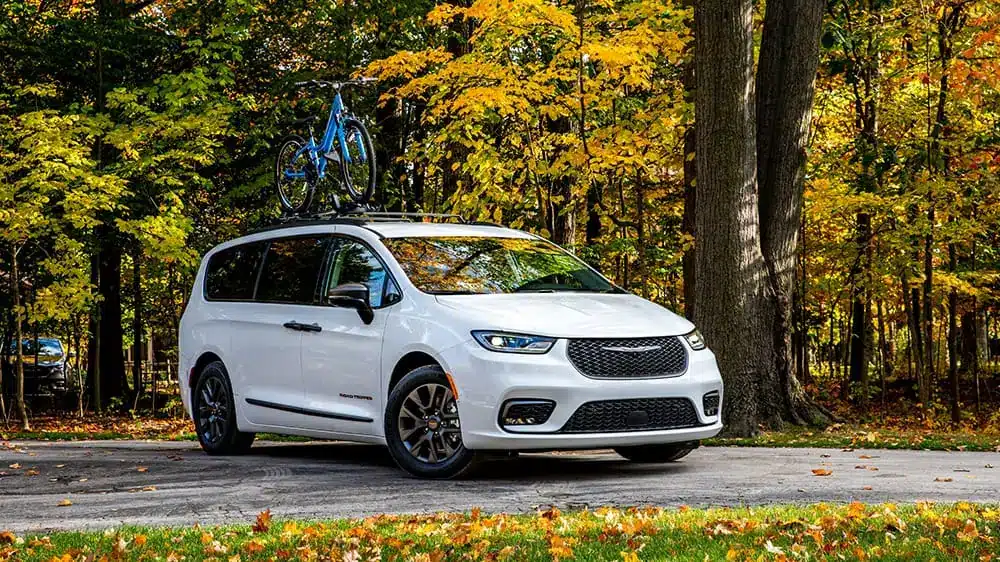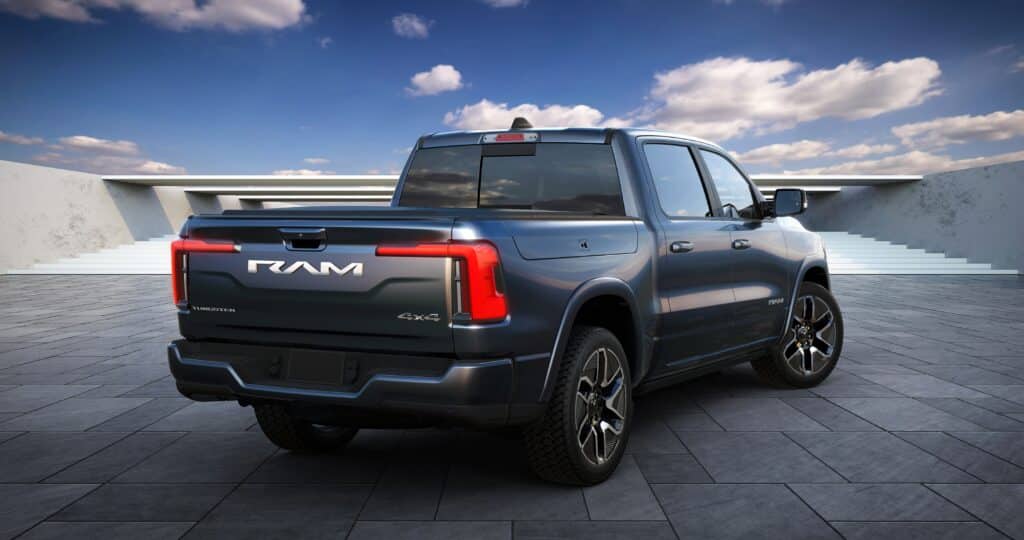Stellantis Looking for New CEO
Stellantis has begun the process of searching for a successor to its CEO, Carlos Tavares, as part of a strategic move driven by concerns over the company’s struggles with the EV transition, as well as performance in key markets like North America. Tavares, whose contract runs until early 2026, led the creation of Stellantis from the merger of PSA Group and Fiat Chrysler Automobiles. However, recent reports indicate that company chairman John Elkann is keen to address ongoing issues, particularly a 48% drop in profits during the first half of 2024 and rising vehicle inventories in the U.S.
While the search is described as routine succession planning, Tavares faces growing criticism from dealers and workers, especially over his handling of job cuts and production slowdowns. Despite these challenges, it is still possible that he could stay on or have his contract extended, although this appears unlikely. The company’s North American struggles, along with mounting discontent among factory workers, have also fueled speculation about potential labor strikes.
The next CEO will need to address several key priorities, including improving operations in North America and resolving disputes with stakeholders, all while navigating an increasingly competitive automotive industry.

48% Drop In Profits for the First Half of 2024
Stellantis, created from the 2021 merger of Fiat Chrysler and PSA Group, was recently seen as a rising star in the auto industry, even surpassing Volkswagen briefly in market value just six months ago. The company’s success was driven by its strong balance sheet, robust U.S. operations, and a flexible electric vehicle strategy. However, its recent struggles, including a 48% drop in profits for the first half of 2024 and growing vehicle inventories in North America, have spurred discussions about replacing its highly regarded CEO, Carlos Tavares.
While analysts agree that thinking about succession is prudent, the challenge of replacing Tavares, who has been central to the company’s success, is significant. Jefferies analyst Philippe Houchois commented that it’s “very healthy” for a company to plan for succession, but finding someone with the same level of expertise and leadership will be no easy task.
Houchois added: “What’s not clear is who is the person to replace him. At companies where there are collegial or shared management styles, there are people in key functions. At Stellantis, you have Tavares and 30 different people who report to him.”
Stellantis CEO Carlos Tavares, who joined PSA in 2014 and played a crucial role in rescuing the company from near insolvency, is now facing the challenge of steering Stellantis through a turbulent period in the automotive industry. Tavares, known for orchestrating the €50bn merger between Fiat Chrysler and PSA to create Stellantis, has cleared the decks around him, leaving the company without a clear internal successor. This has made the search for a replacement particularly daunting.
The ongoing complexities of fully integrating Stellantis’ French, Italian, German, and U.S. operations—spanning 14 brands and a new Chinese brand—remain a significant challenge. Additionally, the broader auto industry is grappling with external pressures such as the rise of cheaper Chinese-made cars, slowing growth in electric vehicle (EV) sales, and increasingly stringent emissions regulations.
While Tavares has managed to stabilize and grow the company, especially by acquiring Opel from General Motors, Stellantis is now at a critical juncture. The search for a new CEO to lead through these industry challenges is one of the most pressing issues facing the company today.

Chris Donkin, managing partner at executive search firm Savannah, highlighted the complexity of finding a successor to Carlos Tavares, stating that it is difficult to envision any other automotive CEO taking over Stellantis, given its complex structure of merged brands. Donkin remarked, “He is the one who built it,” acknowledging Tavares’s pivotal role in forming Stellantis through the €50bn merger of Fiat Chrysler and PSA.
Although Tavares is celebrated for his straightforward approach and passion for cars—racing vintage models in his spare time—critics argue that his cost-cutting measures have hindered the company’s brands from receiving necessary investment. Some have noted that the high prices Stellantis charged for its vehicles turned away consumers at a time when competition intensified, particularly from Chinese automakers.
The €36.5 million pay package awarded to Tavares in 2023 has also sparked discontent among workers, especially as they face strict budget controls. However, Tavares has defended his compensation as part of his contract.
Benoit Vernier, a union representative for France’s CFDT at Stellantis, expressed growing frustration with Carlos Tavares’s relentless cost-cutting measures, saying the company has reached the point where “no more cuts were possible.” Vernier detailed how even basic internal operations, like postal services and travel, have become cumbersome due to the extensive restrictions implemented under Tavares’s leadership. He noted that Tavares, once seen as the “savior” of the company, is now going “too far” in his efforts to tighten expenses.
Earlier in 2024, Tavares also stirred political controversy in Italy by casting doubt on the future of key Fiat factories in Turin and Naples, implying that their survival could hinge on continued government subsidies for electric vehicle production. This sparked a backlash, as it raised concerns over the future of jobs in Italy’s automotive sector if Giorgia Meloni’s government refused to offer more financial support.

UAW Strike Looming
The United Auto Workers (UAW) union in the U.S. is preparing for potential strikes against Stellantis, accusing CEO Carlos Tavares of breaking a promise to reopen the Belvidere, Illinois plant. UAW President Shawn Fain criticized Tavares’s cost-cutting approach, describing it as a “failed, flawed path” and stating, “He’s the problem.” Fain emphasized that workers would be fired if they performed as poorly as Tavares.
The United Auto Workers (UAW) leadership is urging its members at Stellantis to prepare for a potential strike, citing concerns that the automaker is not meeting the product and investment commitments outlined in their previous contract. In a letter issued on Friday, UAW President Shawn Fain and Kevin Gotinsky, the director of the union’s Stellantis Department, made a case for the strike, alleging that Stellantis has failed to live up to its promises. These include commitments related to maintaining jobs and making investments in U.S. facilities, crucial points in last year’s negotiations.
Stellantis, which owns prominent brands like Jeep, Ram, Chrysler, Dodge, and Fiat, has pushed back against the union’s claims, asserting that it has made efforts to meet the terms of the contract. However, the friction between the company and the union reflects broader tensions as the auto industry navigates challenges such as production slowdowns, high inventory levels, and the transition to electric vehicles.
The potential strike could significantly impact Stellantis’s operations, especially as the company is also dealing with cost-cutting measures and competitive pressures in the market. The situation is being closely watched as both sides continue negotiations to avoid a work stoppage.

Overstock of 430,000 Vehicles in the U.S. by mid-2024
Stellantis, grappling with an overstock of 430,000 vehicles in the U.S. by mid-2024, aims to reduce this by 100,000 by early 2025, increasing discounts in dealerships. Meanwhile, internal friction is mounting, with suppliers frustrated by Stellantis’s shifting of sourcing to low-cost countries and abrupt contract cancellations.
The company’s CFO, Natalie Knight, acknowledged the tensions, stating that hard times bring “friction everywhere.” However, the future of Stellantis remains uncertain, with pressure mounting on Tavares to make decisions about its underperforming brands. While Tavares hinted at cutting some brands, his strategy has been to push the company through its challenges by prioritizing performance, not relying on government aid.
Despite the internal discord, Tavares remains undeterred. In a recent interview, he revealed his determination to continue leading, drawing a parallel between his leadership style and his passion for winemaking, stressing his focus on “rigor” and the “pursuit of perfection.”
EV Struggles
The rapid growth of the electric vehicle (EV) industry, coupled with the lack of historical sales data, makes it challenging for automakers to accurately estimate demand for new EV models. Unlike traditional internal combustion engine vehicles, which have decades of sales data to inform production forecasts, the EV market is relatively new, and consumer preferences can change quickly due to various factors like government incentives, charging infrastructure improvements, and shifts in environmental awareness. Stellantis has faced struggles adjusting to quickly changing consumer preferences for EVs.
This unpredictability forces EV companies to maintain highly scalable and flexible production lines. What begins as low-volume production could quickly require a dramatic increase if demand surges. As such, automakers need to be prepared for rapid changes in production capacity, often requiring substantial investments in several areas, including retooling production lines, hiring additional workers, providing specialized training, expanding current factories, leasing additional facilities, or even constructing new plants dedicated to EV manufacturing. Stellantis had mixed success with these factors.
Many experts believe Tavares and his team overestimated EV demand when sales were booming from 2021 to 2023, and did not predict the sales growth slowdown that is currently happening in 2024. One thing is certain, and that is any company such as Stellantis, that is not purely an EV producer, will struggle as the EV demand rises and falls. Now that EV sales growth has slowed in 2024, the market is due for another boom in 2025, especially with strong competition from rivals GM and Hyundai.
Aggressive Electrification Roadmap
Stellantis has set ambitious electrification goals, aiming for a 100% battery electric vehicle (BEV) sales mix for passenger cars in Europe and a 50% BEV sales mix in the U.S. by the end of 2030. This plan, first revealed during Stellantis EV Day in July 2021, positions the company as a leader in the EV market, with electrified vehicles already achieving significant market share in both North America and Europe.
To support its electrification strategy, Stellantis plans to introduce 75 BEV models across its 14 brands by 2030, targeting total sales of 5 million BEVs in that year. Notably, the company intends to launch only BEVs in Europe starting in 2026, with luxury and premium models being introduced as early as 2025.
To fund these initiatives, Stellantis is investing €30 billion through 2025 in electrification and software development. This substantial investment reflects the company’s commitment to adapt to market changes and advance its product offerings in line with the growing demand for electric vehicles. The Stellantis EV lineup is strong in the US currently, offering the Jeep Wagoneer S, Ram 1500 Truck, Dodge Charger, Fiat 500e, and more.
See more information on Stellantis’s electrification roadmap.

Electric Vehicle Marketing Consultant, Writer and Editor. Publisher EVinfo.net.
Services